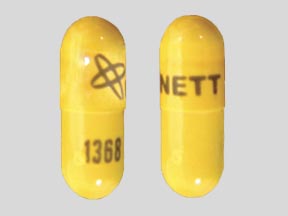Danazol Dosage
Medically reviewed by Drugs.com. Last updated on Aug 6, 2025.
Applies to the following strengths: 50 mg; 100 mg; 200 mg
Usual Adult Dose for:
Additional dosage information:
Usual Adult Dose for Endometriosis
Mild Disease:
- Initial dose: 200 to 400 mg orally per day, given in 2 divided doses
- Maintenance dose: Gradual downward titrations should be performed to maintain amenorrhea.
- Duration of therapy: Up to 9 months
Moderate to Severe Disease or Patients Infertile due to Endometriosis:
- Initial dose: 800 mg orally per day, given in 2 divided doses
- Maintenance dose: Gradual downward titrations should be performed to maintain amenorrhea.
- Duration of therapy: Up to 9 months
Comments:
- Treatment should begin during menstruation, OR appropriate pregnancy tests should be performed prior to starting treatment ensure that the patient is not pregnant while on treatment.
- Treatment should continue uninterrupted 3 to 6 months, but may continue for up to 9 months.
- Treatment may be reinstituted if symptoms recur.
Use: Treatment of endometriosis amenable to hormonal management
Usual Adult Dose for Fibrocystic Breast Disease
100 to 400 mg orally per day, given in 2 divided doses
Comments:
- Most patients may be treated with simple measures (e.g., padded brassieres, analgesics). Patients requiring treatment with this drug may have symptoms of severe pain and tenderness.
- Patients should be advised that treatment is not innocuous; hormone level alterations and symptom recurrence are very common after discontinuation of treatment.
- This drug is usually effective in decreasing symptoms of fibrocystic breast disease (e.g., nodularity, pain, tenderness); pain and tenderness are typically eliminated in 2 to 3 months, and nodularity is usually eliminated after 4 to 6 months of uninterrupted treatment.
- Approximately 50% of patients will have symptom recurrence within 1 year; treatment may be reinstated in this patient population if necessary.
Use: Treatment of symptomatic fibrocystic breast disease by suppression of ovarian function
Usual Adult Dose for Angioedema
Initial dose: 200 mg orally 2 to 3 times a day
- After a favorable initial response, continuing doses should be determined by decreasing the dose by 50% or less at intervals of 1 to 3 months (or longer).
- If an attack occurs, the daily dose may be increased by 200 mg.
Comment: Patients should be monitored closely during dose adjustments, especially in patients with airway involvement.
Use: Prevention of all types of angioedema (e.g., cutaneous, abdominal, laryngeal) in male and female patients
Renal Dose Adjustments
Renal dysfunction: Data not available
Marked renal dysfunction: Contraindicated
Liver Dose Adjustments
Liver dysfunction: Frequent monitoring recommended.
Marked liver dysfunction: Contraindicated
Precautions
US BOXED WARNINGS:
PREGNANCY:
- Use of this drug in pregnancy is contraindicated.
- A sensitive test (e.g., beta subunit test if available) capable of determining early pregnancy is recommended immediately prior to start of therapy.
- Additionally, a non-hormonal method of contraception should be used during therapy.
- If a patient becomes pregnant while taking this drug, administration of the drug should be discontinued and the patient should be apprised of the potential risk to the fetus.
- Exposure to this drug in utero may result in androgenic effects of the female fetus; reports of clitoral hypertrophy, labial fusion, urogenital sinus defect, vaginal atresia, and ambiguous genitalia have been received.
STROKE RISK:
- Thromboembolism, thrombotic and thrombophlebitic events including sagittal sinus thrombosis and life-threatening or fatal strokes have been reported.
HEPATIC EFFECTS:
- Experience with long-term therapy with this drug is limited. Peliosis hepatitis and benign hepatic adenoma have been observed with long-term use. Peliosis hepatitis and hepatic adenoma may be silent until complicated by acute, potentially life-threatening intraabdominal hemorrhage.
- The physician therefore should be alert to this possibility.
- Attempts should be made to determine the lowest dose that will prove adequate protection.
- If the drug was begun at a time of exacerbation of hereditary angioneurotic edema due to trauma, stress or other cause, periodic attempts to decrease or withdraw therapy should be considered.
PSEUDOTUMOR CEREBRI:
- This drug has been associated with several cases of benign intracranial hypertension, also known as pseudotumor cerebri.
- Early signs and symptoms of benign intracranial hypertension include papilledema, headache, nausea and vomiting, and visual disturbances.
- Patients with these symptoms should be screened for papilledema and, if present, the patients should be advised to discontinue this drug immediately and be referred to a neurologist for further diagnosis and care.
Safety and efficacy have not been established in patients younger than 18 years; this drug is not recommended for use in these patients.
Consult WARNINGS section for additional precautions.
Dialysis
Data not available
Other Comments
Administration advice:
- Non-hormonal contraceptive devices should be used during treatment.
Storage requirements:
- Protect from light.
General:
- Ovulation and cyclic bleeding usually resume within 60 to 90 days after discontinuation of treatment.
- This drug may be used in conjunction with surgery or in patients not responding to other treatments (as sole therapy) for the treatment of endometriosis.
Monitoring:
- Hematologic: Periodic hematologic tests
- Hepatic: Periodic liver function tests; hepatic ultrasonography (for patients receiving repeated treatment courses or on long-term treatment)
- Respiratory: Change in voice
Patient advice:
- Patients, especially professional singers, should be told to immediately report any change in voice during or after treatment.
- Patients should be told to use non-hormonal methods of contraception during treatment.
- Patients of childbearing potential should be apprised of the potential harm to the fetus.
- Female patients should discontinue treatment and should speak to a healthcare provider immediately if pregnancy occurs.
More about danazol
- Check interactions
- Compare alternatives
- Pricing & coupons
- Reviews (9)
- Drug images
- Side effects
- During pregnancy
- Drug class: antigonadotropic agents
- En español
Patient resources
Other brands
Professional resources
Related treatment guides
See also:
Further information
Always consult your healthcare provider to ensure the information displayed on this page applies to your personal circumstances.


